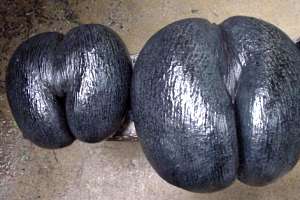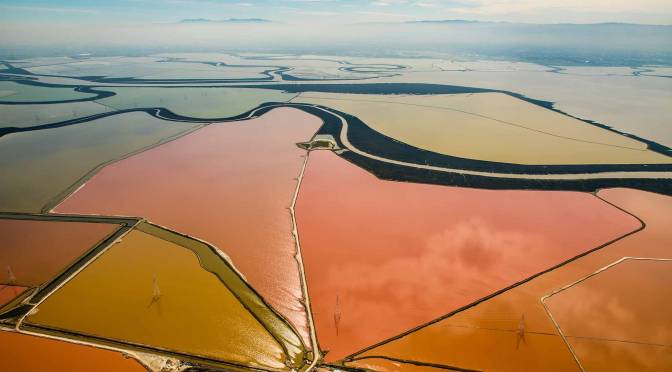 Coco-de-mer, the world's largest seeds
Coco-de-mer, the world's largest seeds
Last Thursday, February 12th, was the inaugural evening of NightLife at the California Academy of Sciences, a weekly science evening for adults. It was also Charles Darwin's 200th birthday. To honor the father of evolution, Academy researchers unveiled Darwin's Carnival, a collection of curious specimens brought out from our collections, including Botany, Ornithology & Mammalogy, Entomology, Herpetology, Invertebrate Zoology, Geology, and the Library Archives.
There was a great variety of unusual specimens elucidating adaptation and evolution. One caught my eye, however, because I used to pass by it every day at our Howard Street location on the way up to my desk. I had presumed it was a cacao seed, but in truth it was a Coco-de-Mer, better known as the world's largest seed.
Coco-de-Mer, also known as "the double coconut", is the seed of the Lodoicea maldvica plant, a large fan palm that reaches 25 m (82 ft) in height. The palm is only found on two islands -– Praslin & Curieuse in the Seychelles. The palm is best known for the seed of its fruit, which is the largest in the world, weighing in at 15 to 30 kg (33 to 66 lbs).
The palm species was named maldvica after the Maldive Islands, the place the seeds were first found (before the 18th century the Seychelles islands were still uninhabited). Seeds that had germinated (and were therefore hollowed out) would find their way into the water, and prevailing sea currents carried a great many of them to the Maldives. The seeds were used by indigenous people on the islands for medicinal treatments and in trade.
Many stories abounded about the source of the seeds before the truth was discovered in the Seychelles islands in 1768. Many believed the seeds came from a mythical tree that grew at the bottom of the sea. European nobles would often have the Coco-de-Mer seeds cleaned and encrusted with jewels-- befitting their mythical origins -- in order to display them as collectibles in private galleries. Today, the Coco-de-Mer is still considered a treasure and the seeds and plants from which they grow are protected as a rare species.
37.7697 -122.466
